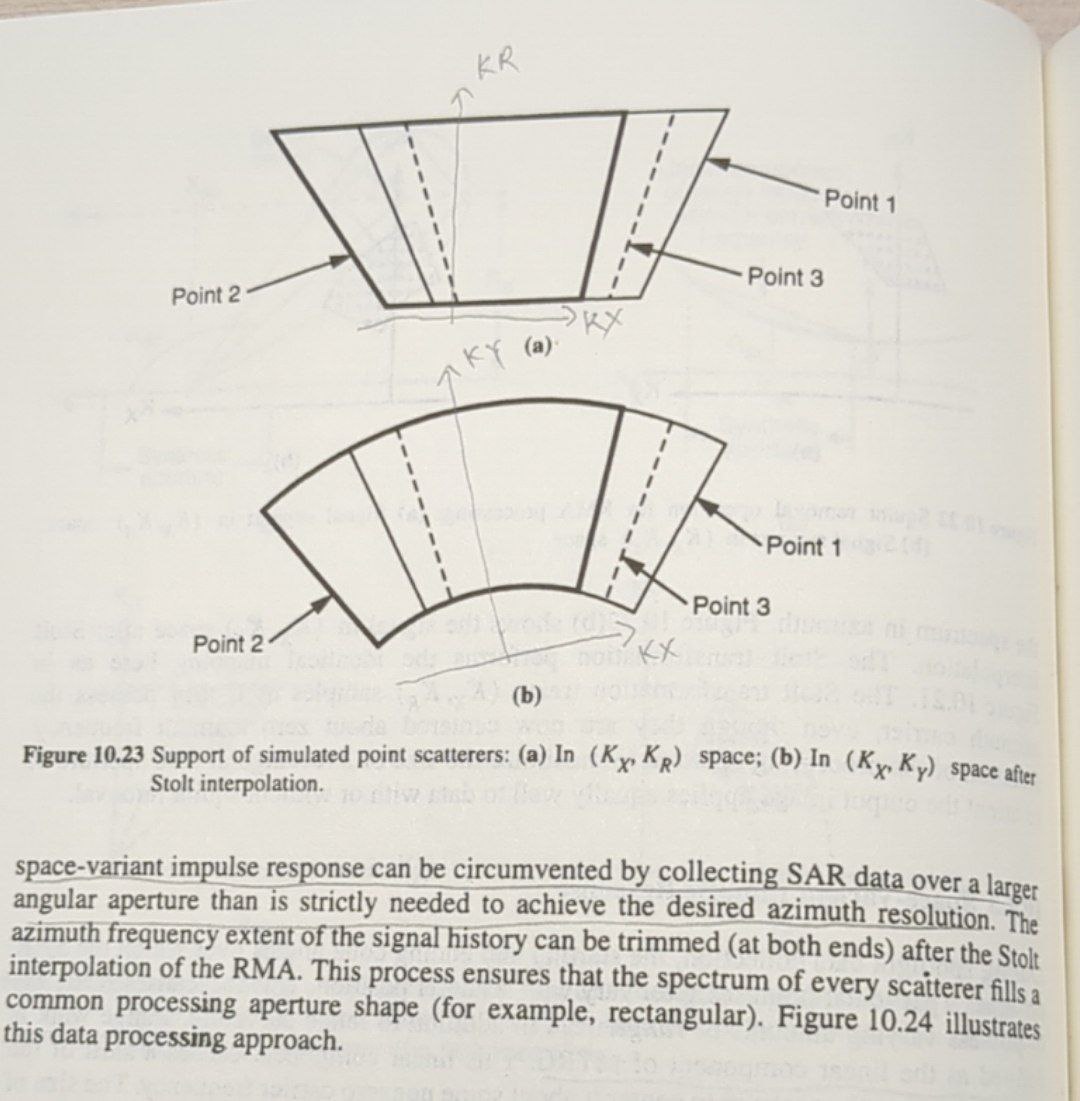The space-variant impulse response can be circumvented by collecting SAR data over a larger angular aperture than is strictly needed to achieve the desired azimuth resolution. From Carrara's text, it mentions that the azimuth frequency extent can be trimmed at both ends after stolt interpolation of the Range Migration Algorithm (RMA). This process would allow the scatterers to fill a common processing aperture (rectangle for example).
I have two questions regarding this process:
Doesn't limiting the size of the processing aperture after stolt interpolation result in some loss of information? (Related to fundamental theory/concept)
Are there some guidelines to follow to know how much can be trimmed both along the azimuth and range directions? (Related to methodology)
Any references that provide more details than the text from Carrara are much appreciated.



